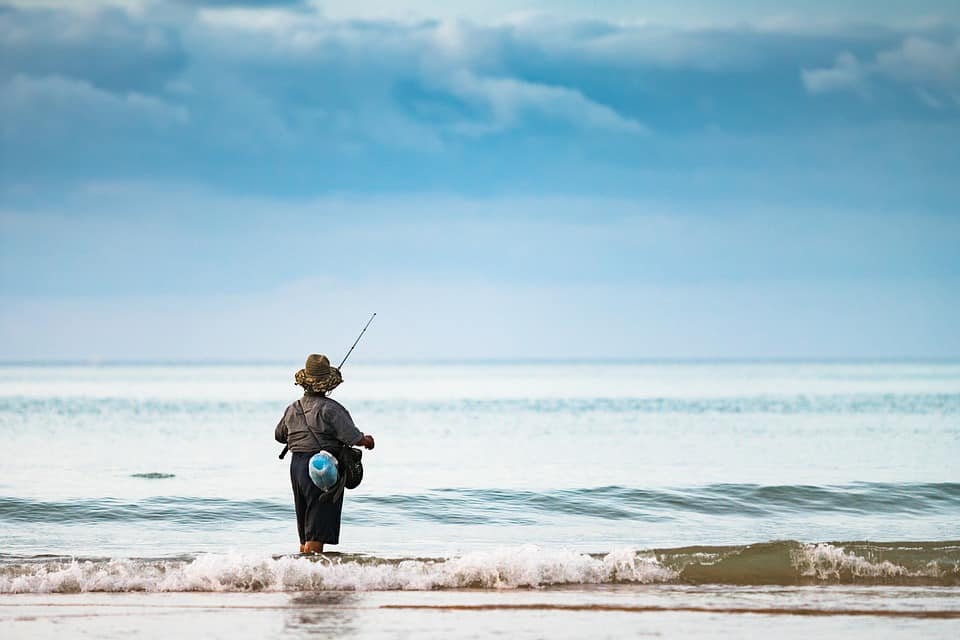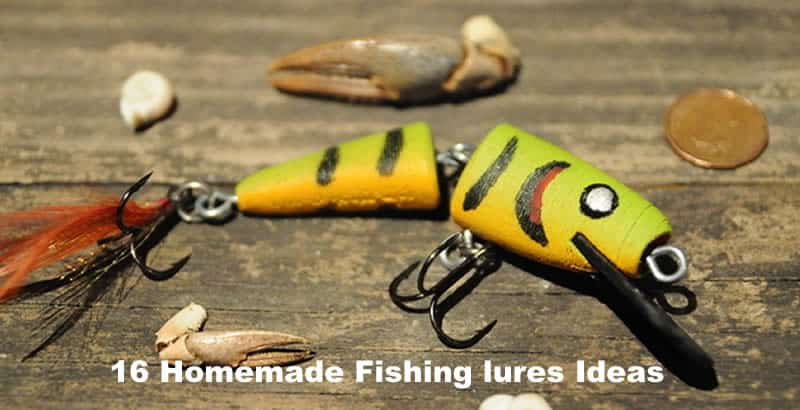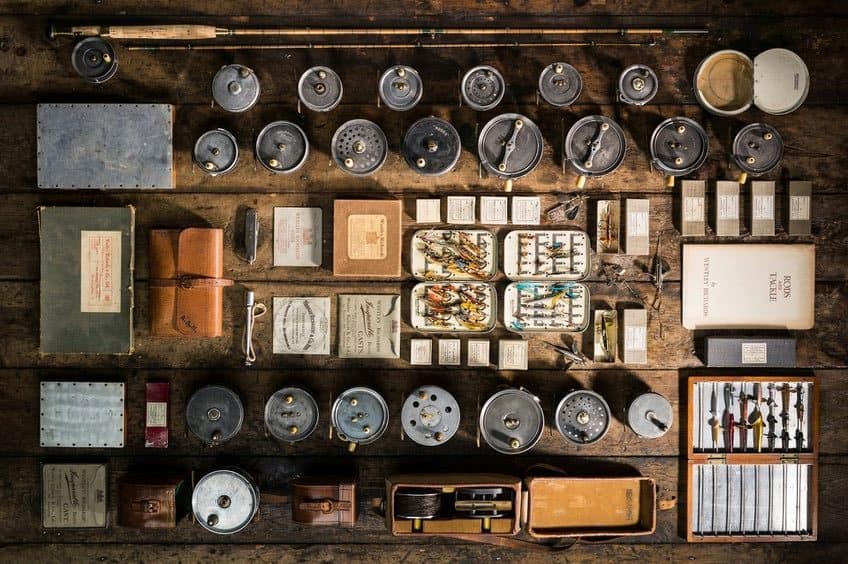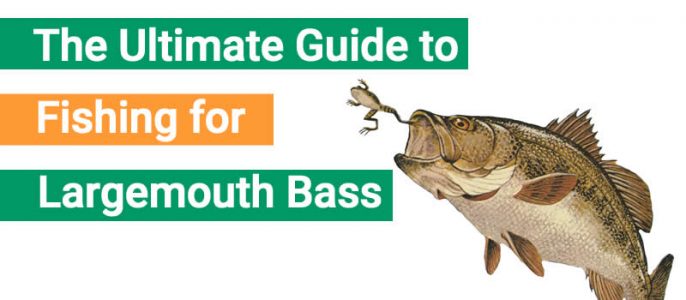If you buy via a link on this page, we may receive a commission, at no extra cost to you.Learn more
Bluegills are freshwater fish that are native to North America and fairly easy to catch. If you enjoy fresh fish and the excitement of catching your own dinner, then fishing for bluegills might become one of your new hobbies.
Can You Eat Bluegills? Yes, you can eat Bluegill fish. Bluegills are often times referred to as panfish because they are best cooked in a frying pan over an open fire or on the stove.
Bluegills can make a great campfire meal. Even if you are not an experienced fisherman, fishing for bluegills is something almost everyone can do. They can easily be found in many areas around the country. Once you know where to look for bluegills, it isn’t too hard to catch, clean, and prepare them.
Are Bluegills Edible?
Many people find bluegills to be tasty freshwater fish to eat. They have more flavor and are firmer and flakier than other freshwater fish. Bluegills are omnivores, and they usually feed on small fish or insects.
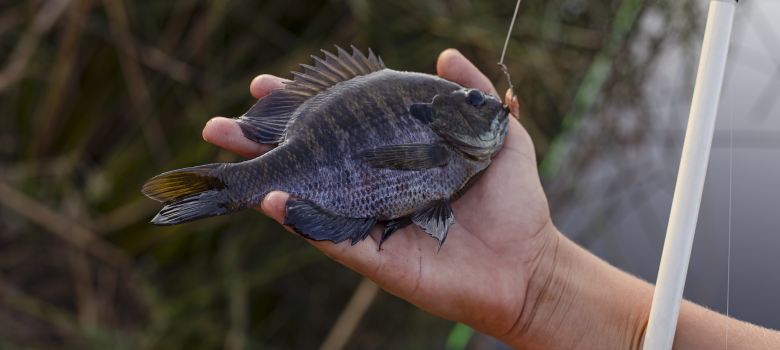
This makes them less likely to be contaminated with dangerous substances, unlike some other fish that eat things from the bottom of the water.
Facts About Bluegills
- Bluegills can grow to over 4 pounds and over 12 inches long, but they are usually much lighter around 1 to 2 pounds, and range from 4 to 12 inches long.
- The color of their faces can vary from blue to black, based on where they are found. All bluegill are distinguished by a black spot on the side of their gills and on their dorsal fin.
- They usually have stripes on their side and a yellow or orange belly.
- Bluegills are important to the food chain and are prey to many other larger types of fish.
Where are Bluegills Found?
Bluegills can be found in many types of water, including:
- Streams
- Rivers
- Lakes
- Ponds
Bluegills are most often found in shallow water. They tend to hide among aquatic life, under plants or logs, and in water plants. A good place to find bluegills is under weed beds because they like to feed off of the food they can find there.
Bluegills can be caught in many parts of the United States, but they are most likely to be found naturally east of the Rocky Mountains, the coast of Virginia, Florida, West Texas, western Minnesota, and West New York.
Best Way to Catch a Bluegill
It is best to fish for bluegills in the late afternoon, or early evening, from about 4:30 pm-7 pm. If you are fishing in the spring or summer, bluegills are most often found in the shallow water near the lake’s edge. If you are fishing in colder weather during the winter, it is best to fish in deeper water.
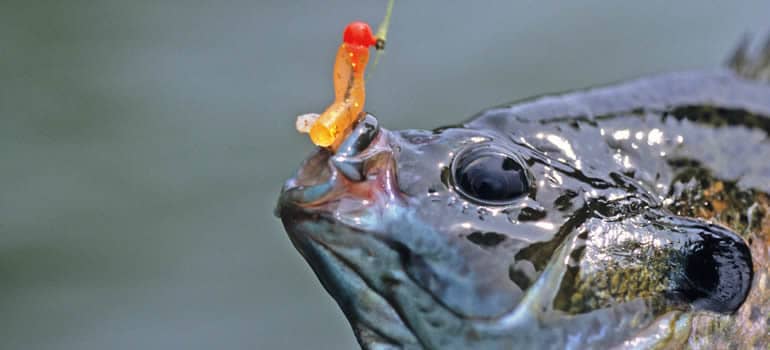
Bluegills have smaller mouths, so using a small hook and small bait is preferred. Most of the smaller bluegills can be caught using bait like crickets, worms, or grasshoppers. If you are trying to catch a bigger bluegill, then you’ll want to use an artificial lure.
The top five lures to catch large bluegill are:
- Grubs- It is best to use a short grub, and the whole lure should be no more than an inch.
- Spinnerbaits-Sometimes putting your grub on a spinner bait can help you be even more successful in catching bluegill. It is best to use a slow and steady approach.
- Inline spinner-These lures are best in mucker waters, and it is best to use a small one in silver, gold, or black color.
- Carolina Rig– This setup can also be successful in catching larger bluegills. Small plastic worms or grubs will work best. This tactic is also better used in high-pressure waters or clear lakes.
- Spoons– When fishing in lakes and rivers, these lures can be the most effective. If you are fishing in deeper waters in the winter or summer, try using a slab-type jigging spoon.
If you are not catching any bluegills, then move to another spot. The waiting game is not always your best option with bluegills. Instead, moving around until you find them biting is your best route. Make sure to stay quiet and not make a lot of noise, or you can scare them off.
How to Clean a Bluegill
Now, if you managed to catch a bluegill, you need to clean and prepare it for cooking. Bluegills have many spines on them that are not poisonous. They are, however, sharp. You will want to be careful while handling the bluegill because the spines could cut you.
The steps to cleaning bluegill are pretty simple. To get started, here are the items you will need.
- a cutting board
- fish scale or dull knife
- sharp knife
- kitchen shears
- something to put the waste in
Once you have your tools, these are the steps to follow:
- With your fishing scale or dull knife, remove all the scales from the fish. Scrape the scales moving from tail to head, starting towards the middle and pushing out. Remove the scales from both sides of the fish, making sure the fish is smooth all the way around.
- Next, cut off the head. You will want to use your sharp knife for this. Remove the head just behind the gills.
- Gut the Fish. After you have removed the head, make cut down the center of the fish with your sharp knife. Start from the tail and cut all the way up the top, and remove all the guts.
- Butterfly Fillet the fish. This is also known as splitting the fish and is an important skill to know, especially when cleaning and cooking smaller fish like bluegills.
- Cut the tail and fin off with a sharp knife.
How to Butterfly a Fish?
If you are not a big fisherman or you don’t know your way around a fish, butterflying a fish might seem like a foreign term. Once you have removed all the scales and guts, continue that center cut all the way through the tail. Open up the fish so that you can see the ribs and backbone. At this point, follow these 4 steps to butterfly fillet the fish:
Step 1. Start at the head moving downward, cutting the membrane with little movements cutting the rib cage from the backbone.
Step 2. Open the fish carefully as wide as you can and gently cut down the backbone on both sides, releasing the bones from the flesh. Make sure you do not cut the flesh of the fish.
Step 3. With your kitchen shears cut the backbone free from the tail end and remove it carefully.
Step 4. Using your sharp knife, remove the ribs from the flesh by gently cutting under the ribcage.
Best Way to Cook a Bluegill Fish
Once you have cleaned your bluegill, there really is no wrong way to cook it. They are known as panfish because they are easily cooked in a frying pan over an open fire. Bluegills can taste great when you sauté them with salt and pepper over the fire, or you can wrap them in foil and bake them on the hot coals with Italian seasoning.
If you want to try something a little fancier, you can coat them in batter and fry them in hot oil. There are millions of recipes out there for frying fish, but if want to keep it simple all you need is:
- An egg
- Milk
- Seasoned flour or cornmeal (with a little salt and pepper added, or, better yet, some garlic seasoning)
- Oil
Let your bluegill soak in an egg and milk mixture then coat it really well in the flour. Fry it up in hot oil for a few minutes on each side, and you will have delicious fried bluegill.
Final Thoughts
If all this talk about cooking fish, then go ahead and make plans to head to your favorite fishing hole. If you catch bluegill, don’t throw it back in. You know what to do with it. Enjoy!

